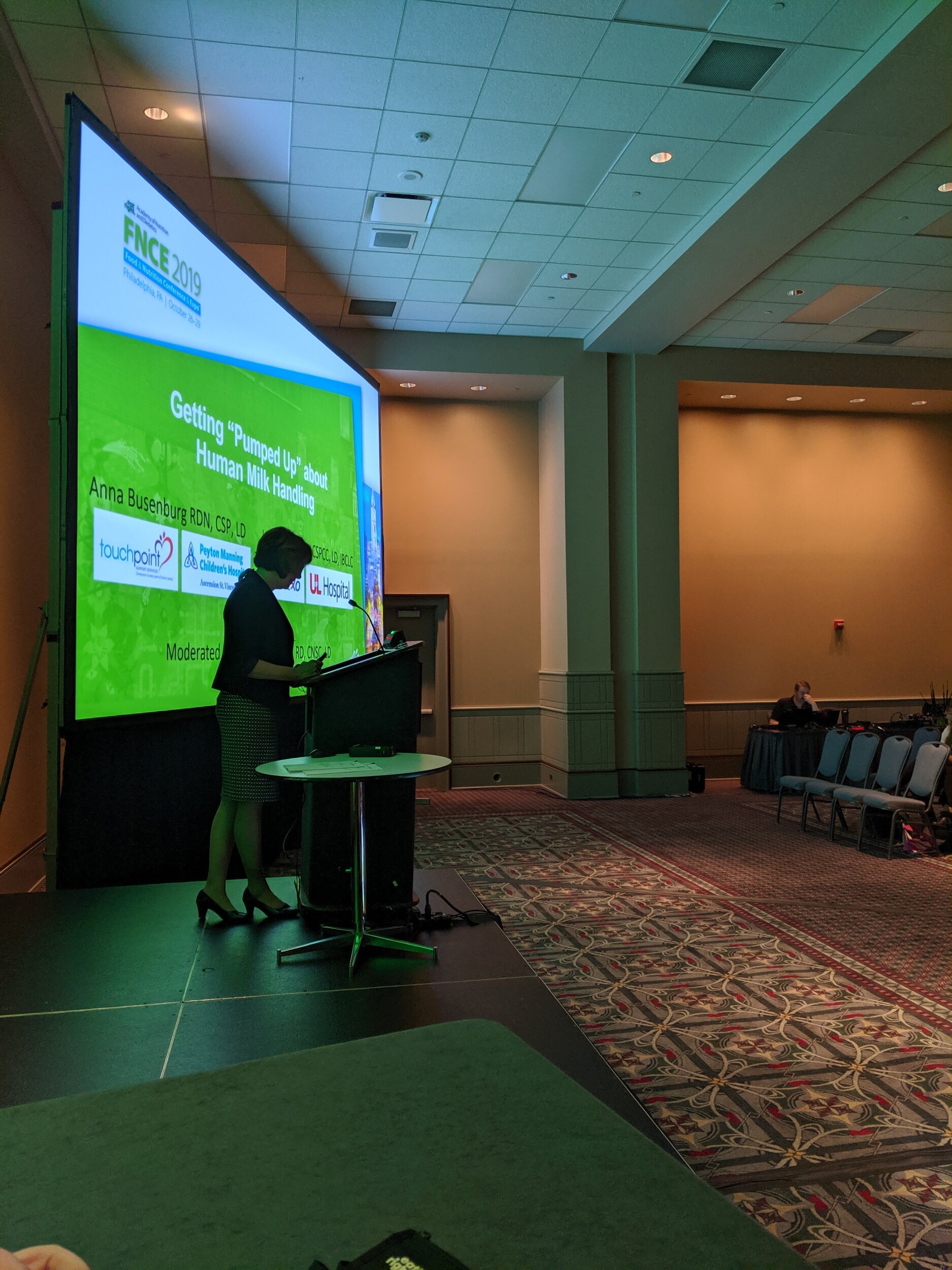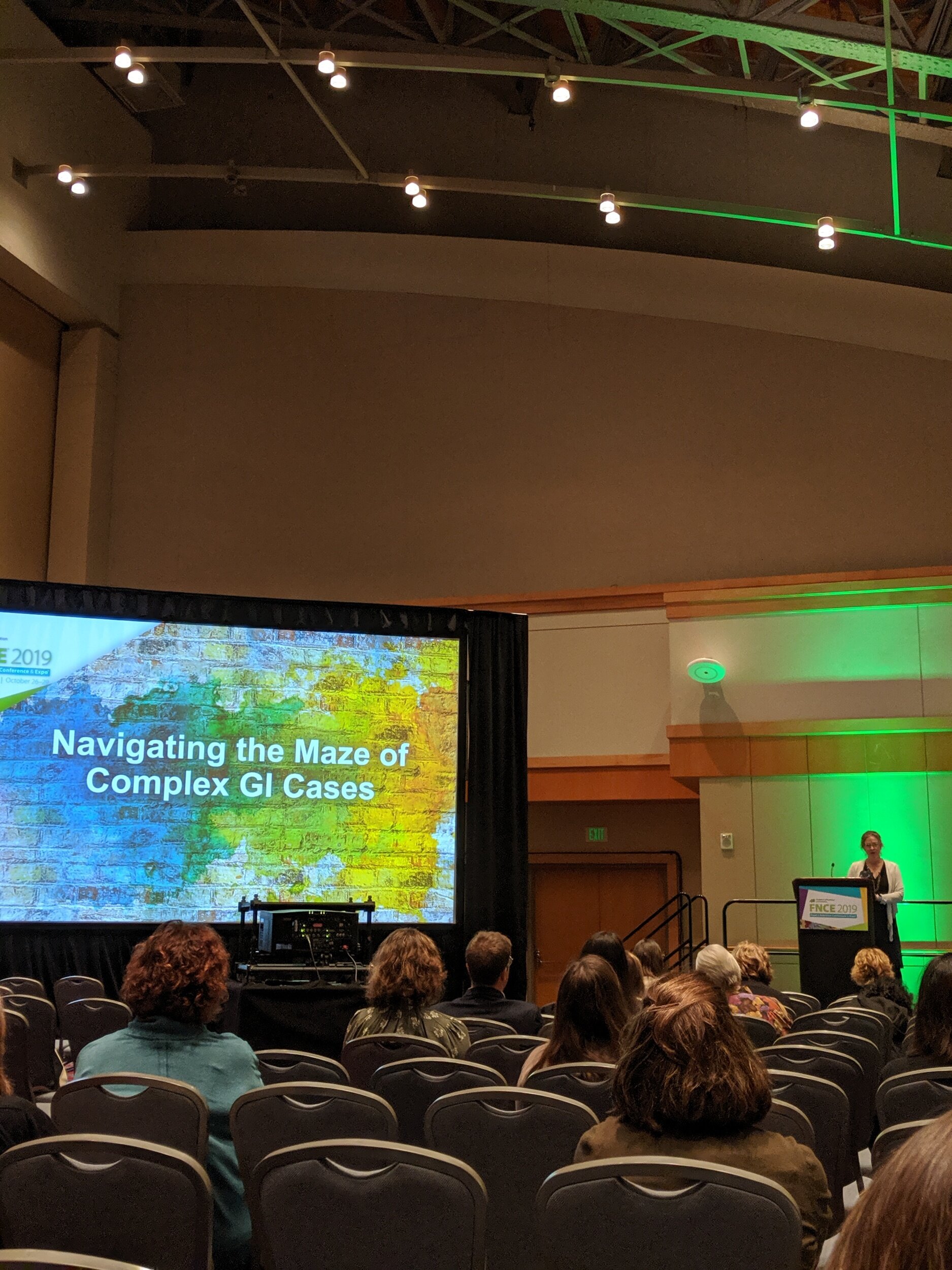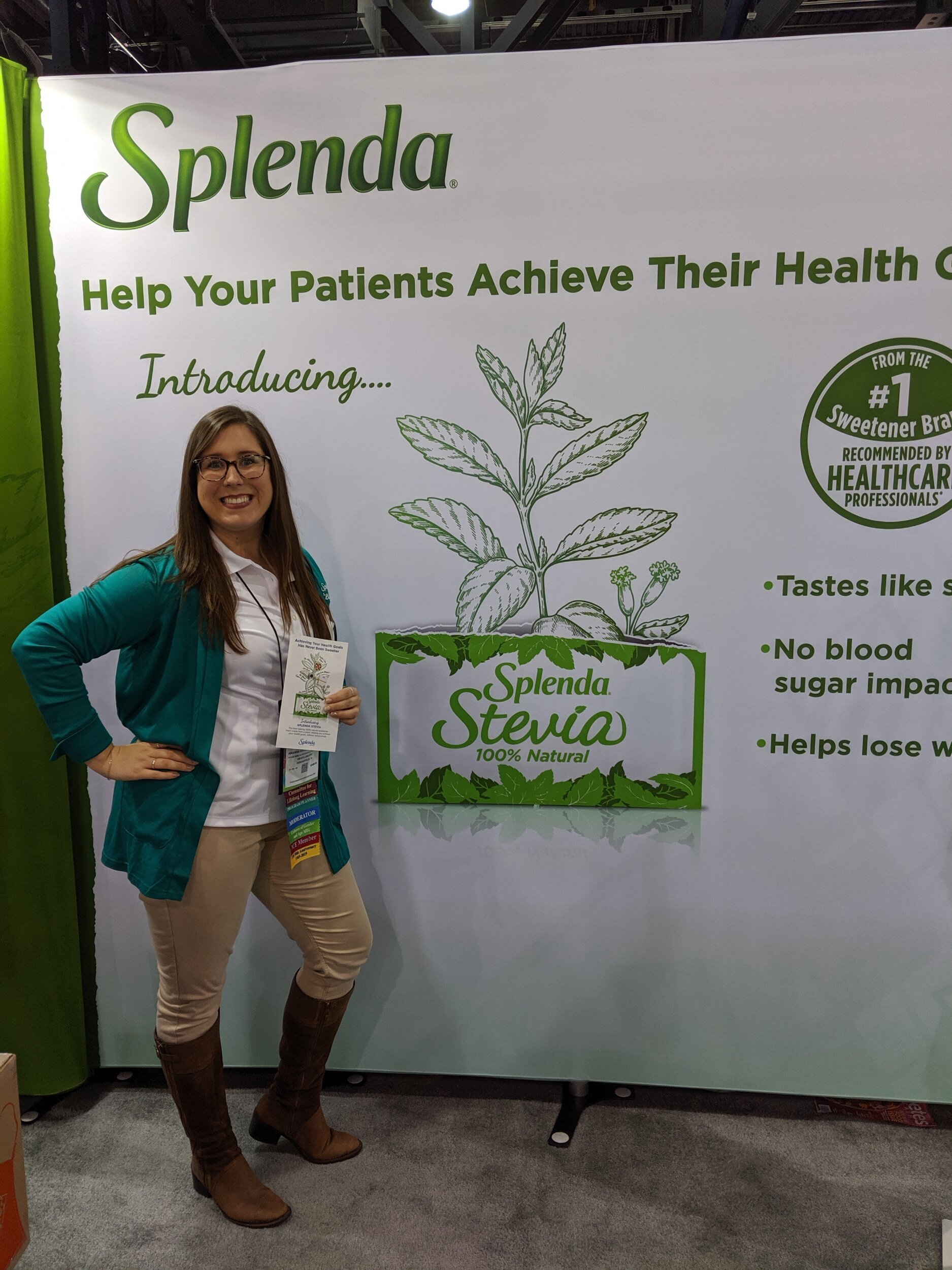I realized that I never wrote up a blog post about my experience presenting at FNCE. If you read my FNCE Recap post that is a great overview of the main parts of this annual dietetics conference. I have had the opportunity to attend FNCE now three times, but this was the first time I had ever presented at a national conference. I wanted to share this experience with you so that you might be encouraged to put your idea and your self out there in whatever you are doing. If you have an idea (that might seen crazy or far fetched) go for it and don’t give up!
I have always enjoyed public speaking. I have done it from an early age (like 3rd grade in 4-H). It has been a skill that my parents wanted to instill within me and I have given lots of talks for 4-H and earn scholarship money and then been able to translate that into my job. I enjoy doing media interviews and then it has always been a dream to present at a conference on the national level. I enjoy sharing information and teaching people. I realize that lots of people are fearful of public speaking. You should never fear speaking in front of a group, anyone can do it and it just takes practice. It is a skill and it takes time and fine tuning, but anyone can do it!
I wanted to share with you, how I came to present at FNCE 2019 in Philadelphia. I had put some time into writing up an article about RDNs involvement in human milk and formula preparation in the NICU. From my work experience and communication with RDNs around the country this is an area where lots of RDNs aren’t well trained and don’t feel 100% comfortable. As dietitians, we are be asked to cover this area and I wanted to help empower other dietitians to know how to optimize that milk preparation areas in their units to better serve their patients. I had this idea that I thought this information could be put together as a lecture and I tried to brain storm who might be willing to be help me with this undertaking. My friend and colleague, Laura Serke, came to mind and she was totally on board for helping me with this proposal. She had never attended FNCE before, but we were up for writing up an outline and submitting it to the Center for Lifelong Learning. I also asked Salisa Lewis to help us and serve as our moderator for the talk. She was helpful in supporting us and editing our ideas to help make them concise and finalized for the presentation. After submitting the proposal, we were notified that we had been selected! I was over the moon to say the least. I was so excited that the Academy of Nutrition and Dietetics felt like this topic was important enough to be at FNCE. Laura, Salisa and I then worked to put together our 1.5 hour presentation, slide deck and speaker notes. It took lots of hours of hard work, putting together ideas from our outline, condensing things down to fit time constraints and then practicing what we were going to say. Finally it was time to submit the slide deck and then we headed to Philadelphia to present. Our talk was scheduled for Sunday morning at 10am. We got our slide deck loaded, poll questions loaded and then geared up for our presentation. It went great! There were a good number of people in attendance (~75 people I am estimating). They seemed engaged and interested and they gave us great reviews on their evaluations. I am hoping that this was a session where RDNs were able to learn more about how to manage infant feedings and then feel empowered to take that information back to their jobs and make positive change in the units where they work.
All in all this experience of presenting at FNCE was amazing. I learned so much about the process and I loved every part of it. Yes, there were lots of late nights and working on edits on nights and weekends, but the end result was so worth it. I am so thankful for amazing colleagues who are in support of my crazy ideas. Thank you to Laura and Salisa for all their help and support. Thank you to my amazing husband who held down the fort at home and helped me have time to work on this presentation. He is my biggest cheerleader and I am so thankful for ALL of his support.
So if you have a crazy idea and something you want to go for … make a plan and take that leap. You can do hard things and when you look back on it, that challenge will be worth all the hard work!






































